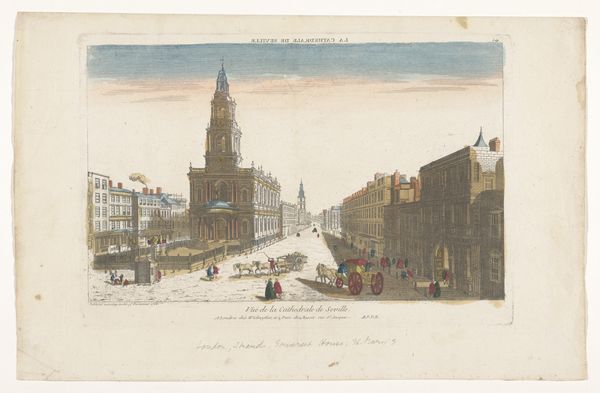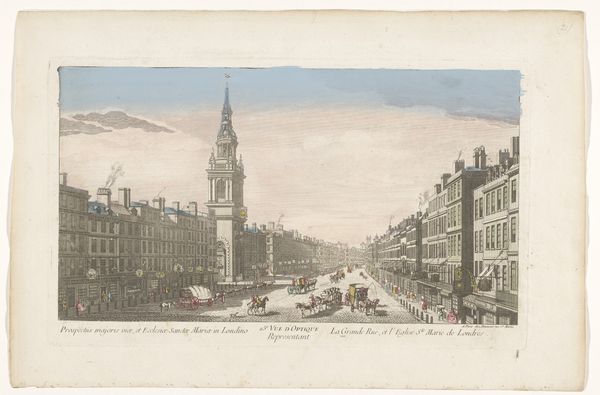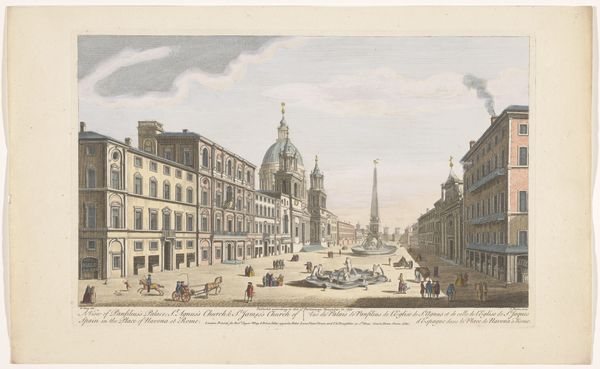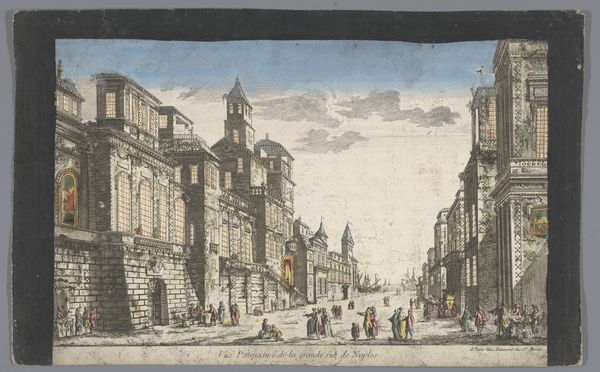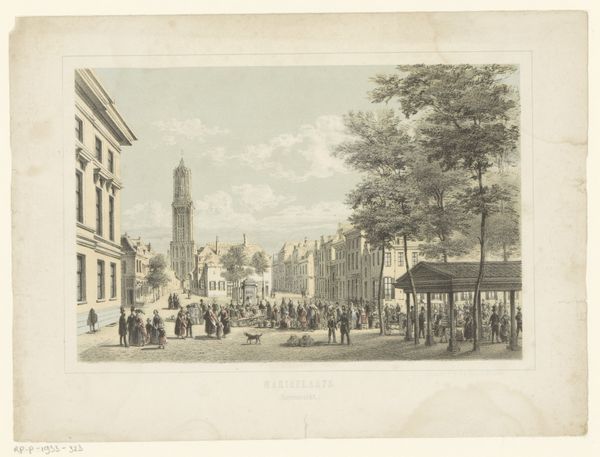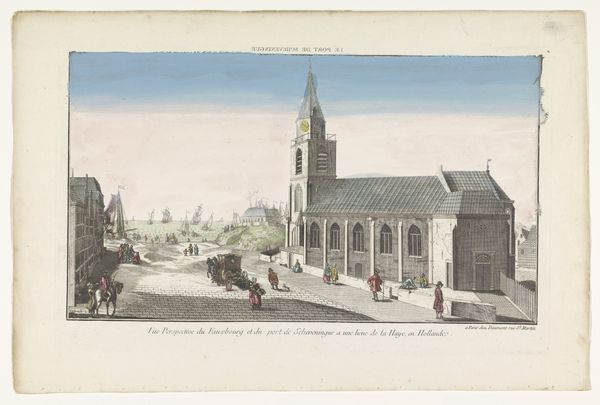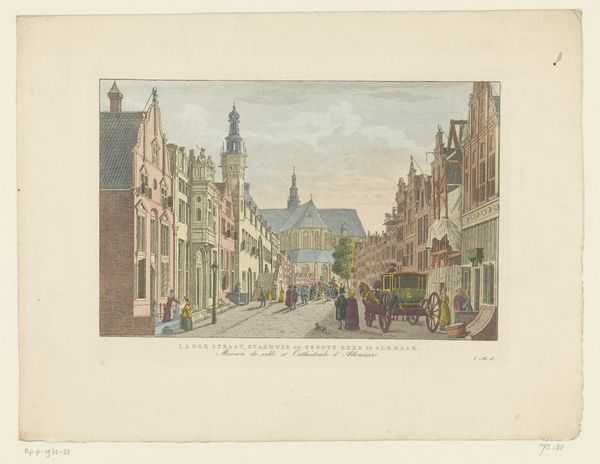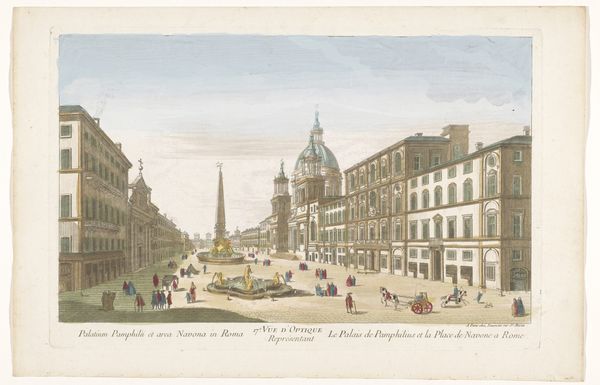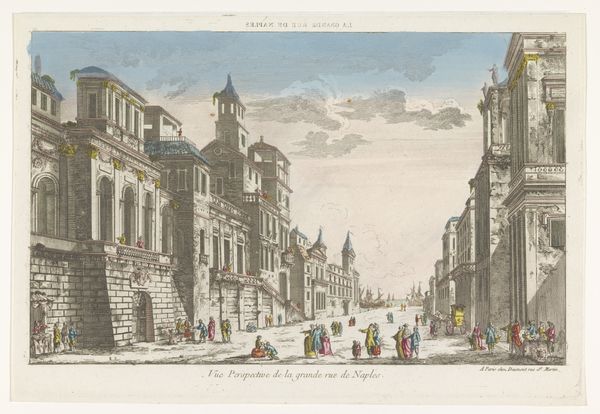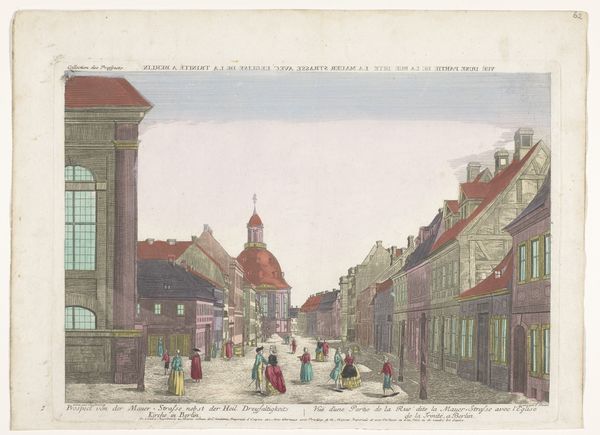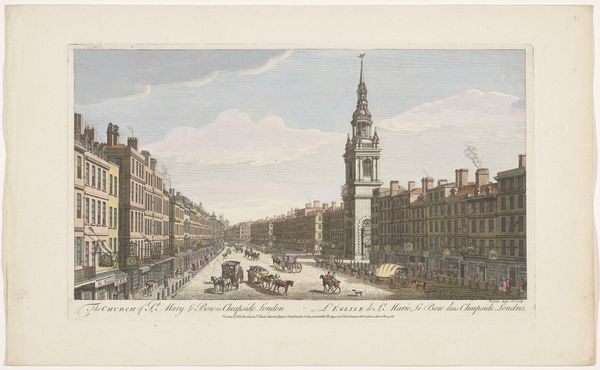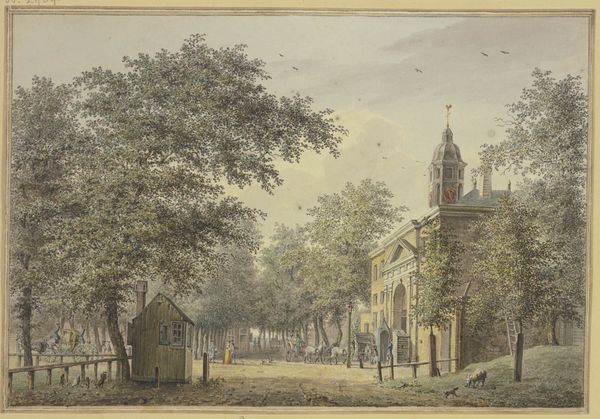
Gezicht op Somerset House en de kerk Saint Mary-le-Strand te Londen after 1722
0:00
0:00
nicolasjeanbaptistepoilly
Rijksmuseum
drawing, print, ink, engraving
#
drawing
#
baroque
# print
#
ink
#
coloured pencil
#
cityscape
#
engraving
Dimensions: height 266 mm, width 406 mm
Copyright: Rijks Museum: Open Domain
Curator: Here we have an intriguing image, a print titled "Gezicht op Somerset House en de kerk Saint Mary-le-Strand te Londen," or "View of Somerset House and St. Mary le Strand Church in London" by Nicolas Jean Baptiste Poilly, created after 1722. Editor: My immediate impression is of ordered commerce, rendered delicately. The subtle wash of color applied to the engraved lines adds a sense of everyday labor, softened by the gentle palette. What material evidence anchors this for you? Curator: Absolutely. Beyond just documentation, there is symbolic importance at play here. We see the grandeur of Somerset House, representing worldly power, balanced against the spire of St. Mary-le-Strand, representing spiritual authority. This tension, rendered in a Baroque style, echoes societal dynamics of the period. These carefully balanced institutions project a controlled urban scene but hide human realities. Editor: True, and if we think about the materials, an engraving allows for reproduction, wider consumption and accessibility compared to say a painting done in oil that would have probably catered to wealthier, aristocratic crowds. Printmaking involves specific labor and skill—engraving the plates, pulling the prints, and even applying the color. Consider the economic structure supporting its creation; was Poilly making these for a wealthy patron, or to be sold in prints shops? The availability shapes the artwork’s impact in London’s culture. Curator: Precisely. The visual language further emphasizes established hierarchies. Consider the church itself. St. Mary-le-Strand was rebuilt by James Gibbs, meant to communicate established values, the sacred. We see the artist choosing an elevated viewpoint, one that not only grants perspectival depth, but allows Poilly to establish their dominance and command over the depicted urban area. Editor: An important view of labor that allows an understanding of power. Curator: A view of more than just aesthetic consideration or documentary, offering insight into how cultural forces manifest materially. Editor: This work illuminates the intersection of place, purpose and making for a London populace and time.
Comments
No comments
Be the first to comment and join the conversation on the ultimate creative platform.

